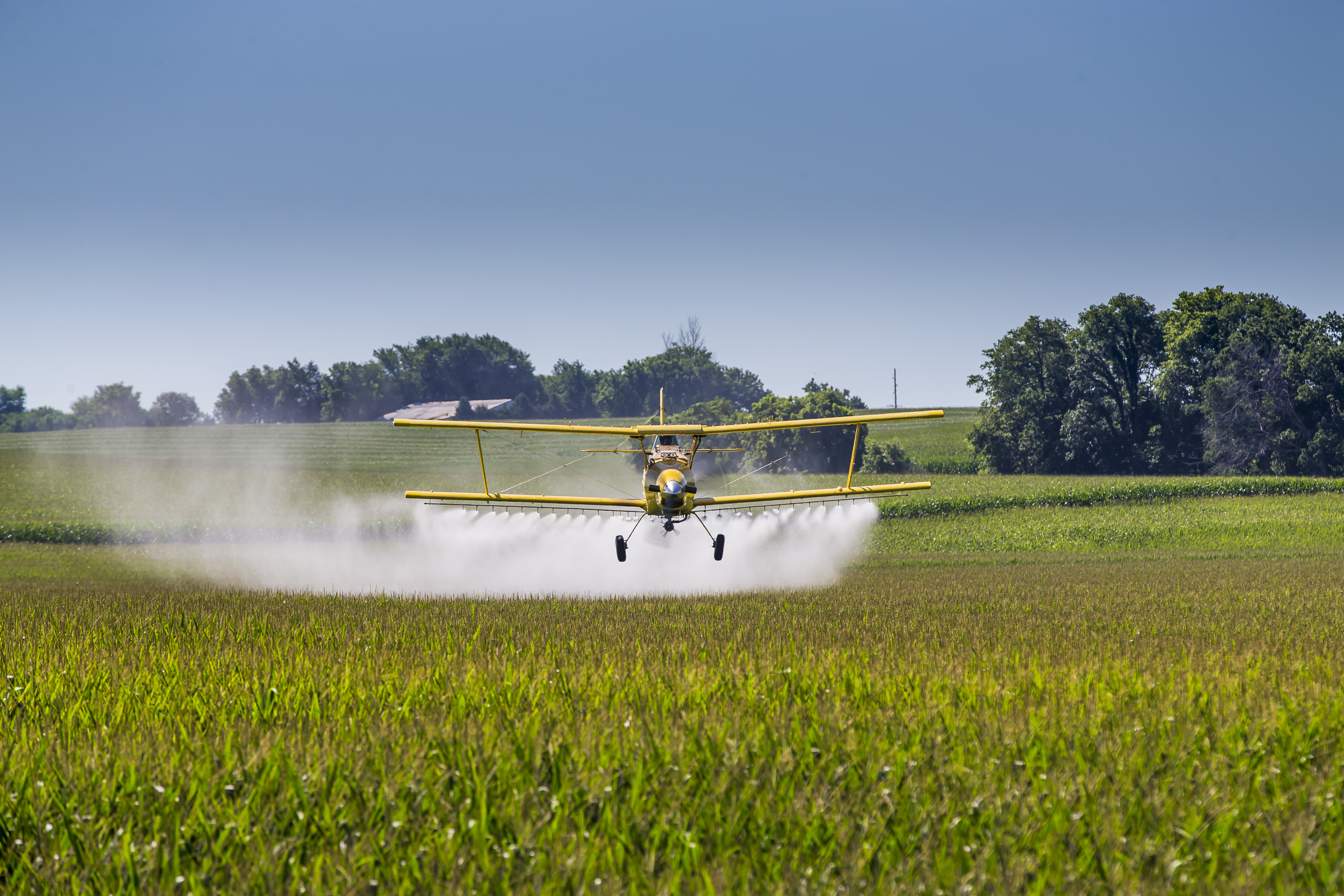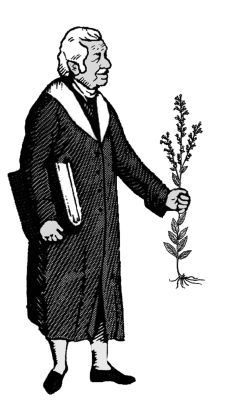To Spray or Not to Spray
Published: Wed, 03/14/18
March 14, 2018
To Spray or Not to Spray Kelly Pomeroy, M.H.
There are sprays for spiders, ants, roaches, bacteria, fungi, broadleaf “weeds" and grasses. Pellets, granules, sprays and other applications either kill or fertilize these living things. Have you ever stopped to wonder, “How will
this affect me, the birds, the fish and the world in which I live?” Each of us long for our personal Utopia's, but at what cost will we achieve them? Through this article, I hope to encourage research of chemical product usage.
In September of 1962, Rachel Carson's book Silent Spring was published. It swept across the country creating an awareness of the damaging effects of pesticides and chemical products. I recently finished reading this eloquent book. She is articulate, well documented
and expresses a great love and reverence for life. In her book she discussed chemicals such as malathion, dinitrophenol, pentachlorophenol, toxifene, dieldrin, aldrin, hexachlore and DDT.
DDT, Dichlorodiphenyltrichloroethane, was approved for public use in 1945. They used it to treat lice, malaria (still used today in
India), insecticides for homes, farms, cities and more. Mass aerial sprays, crop dusting, beach and road side sprays were common. DDT was used when Dutch Elm disease hit the United States, which came to America in a shipment of logs. A beetle was the culprit for spreading the fungal disease, which spread through Elm trees like wildfire. In an effort to stop the disease they burned the trees and eventually used DDT in an attempt to kill the beetle. Nothing, including DDT, seemed to help. Cedar
Rapids, Iowa alone lost 50,000 elm trees but that was nothing compared to the devastating loss of birds and animal life due to DDT. The birds didn't die from being sprayed, but from eating the DDT infected worms that had been living in the soil where treatments occurred. DDT has caused toxicity and death from the smallest microorganisms in rivers and lakes, to birds and humans. It was one of the culprits for the near extinction of the American Bald Eagle. The chemical would thin the wall of
their eggs and the embryo would die. DDT was banned in 1972 due to complications and unprecedented deaths. Recently traces of DDT were found in Michigan at the sight of an old processing plant for DDT. Penguins in Antarctica as of 2008 had DDT reportedly in their fat, as a result of runoff from mainlands and dispersion to the oceans. Although banned, we are still left with the consequences of DDT. We have polluted our planet. In regard to choices, a great theologian once said, “Hence
we’d better want the consequences of what we want!”
A current product in use today has the chemical compound, glyphosate. This widely used chemical has been researched as being safe, but some concern has arisen for its affects on aquatic life. One of the labels say, “To protect the environment, do not allow pesticide
to enter or run off into storm drains, drainage ditches, gutters or surface waters.” Fertilizers have also been the cause for dead zones in our oceans, areas lacking oxygen. I encourage you to research products before you use them. The National Pesticide Information Center is a great resource
for researching these pesticides and fertilizers.
In level 1000 in The School of Natural Healing, John Dromgoole of The New Garden, Charles Walters Jr, and organic gardener Steve Sprinkel discuss healthy practices to organic gardening. Here is a summary of their discussion.
Plants need more than just Nitrogen, Phosphorus and Potassium, but micronutrients as well. If plants are fed properly, they will be able to protect themselves from insects and disease. Insects are nature's disposal crew that help remove weak and diseased plants.
Weeds are indicators of the soils conditions. Using herbicides will not cure the soil deficiencies. Chemical pesticides and herbicides wrongly salvage unhealthy crops. Manmade chemical molecules do not exist in nature and most often do not breakdown in our lifetimes.
Organic gardeners use kelp (Laminaria digitata), comfrey (Symphytum officinal) and organic matter such as dried fall leaves which contain Nitrogen, Phosphorus, Potassium (NPK)
and micronutrients. Many are conscience of waterways and make efforts to keep them safe for aquatic life and human use. Comfrey, especially has great specifications for NPK proportions and nutrients. I recommend using natural matter available in your local area. For more information on using Comfrey as a fertilizer, click here.
Rachel Carson said, “Life is a miracle beyond our comprehension, and we should reverence it even where we have to struggle against it... To resort to weapons such as insecticides to control it is a proof of insufficient knowledge and of an incapacity so to guide the
processes of nature that brute force becomes unnecessary. Humbleness is in order here. There is no excuse for scientific conceit.”
Kelly Pomeroy is a graduated Master Herbalist and works as a Student Adviser for the School of Natural
Healing. She is the mother to four awesome kids and currently pursuing a Biology Degree.
Printable Version: http://herballegacy.com
New staff pick!
Only available for a limited time

quantities are limited!
Get your copy here!
A Healthier You Radio show is back!
Listen live every monday morning at 11:30 Mountain Time.
Click here for the link to listen to our live show
David Christopher is now on Twitter!
You can follow David @DChristopherMH
Comfrey Tea for Your Plants
.jpeg)
My son broke his foot about a month ago. I soaked his foot in comfrey tea every morning, afternoon and night to help it heal. After we had finished using the water as a soak, I would water my plants with the tea. I was impressed at how much my plants loooooved the tea. It's rich with high amounts of nitrogen, phosphorus, potassium and micronutrients. I used a strong infusion.
4 Tablespoons dried Comfrey leaves or 4 teaspoons for a weaker infusion.
1-quart distilled water
Bring 1 quart of water to a boil. Remove from heat and pour over leaves. Lid the container and allow it to steep for 10-15 minutes. Strain or blend up to use as a “fertilizer” for your plants or a soak for your tired feet. :)
If you don't have comfrey, try green tea or alfalfa tea.
Recipe by Kelly Pomeroy
Printable Version: http://herballegacy.com
Herbal Resource Links
- Herbal Legacy - http://www.herballegacy.com - Our free information website
- The School of Natural Healing - http://www.snh.cc - Quality Education since 1953
- Christopher Publications - http://www.christopherpublications.com - Dr. Christopher's books and more
- Christopher Websites - http://www.christopherwebsites.com - Find all Christopher websites and other great resources
- A Healthier You Radio Show - http://www.ahealthieryouradio.com - Free weekly radio show
The School of Natural Healing: http://www.snh.cc
Christopher Publications: http://www.christopherpublications.com
NOTICE: All information in this newsletter is given out as information only and is not intended to diagnose or prescribe. For our official Disclaimer, Biological Individuality, Important Notice & Terms of Use please see: http://www.herballegacy.com/Disclaimer.html
This newsletter is sent by permission only - you can unsubscribe quickly and easily by clicking the link below.
.

